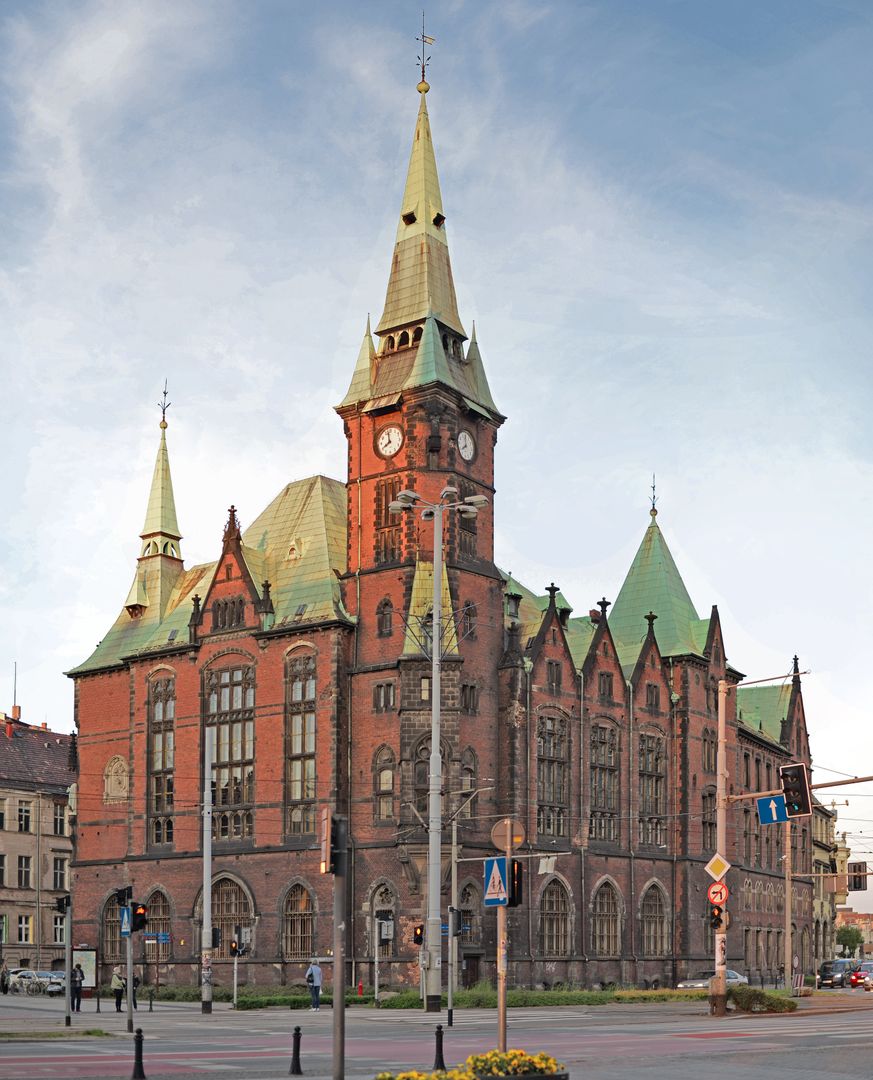The building of the University Library in Wrocław at Karol Szajnocha Street
6.01

Overview
The University Library building in Wrocław, located at Karola Szajnochy Street, is a significant example of Neo-Gothic architecture from the years 1887–1891, designed by Richard Plüddemann. The building, with a usable area of 1,243 m², features a compact, tall structure, a quadrangular clock tower, and a richly decorated façade with Romanesque elements. The ground floor is adorned with large pointed-arch windows, while the upper floors are embellished with diverse windows featuring stone tracery. The building originally served as the Municipal Savings Bank and the City Library, aiming to centralize Wrocław's library collections. After World War II, in 1945, the building came under Polish administration, and in 1946, it was handed over to the University of Wrocław. Following the completion of the new library building in 2012, the old building was put up for sale. An interesting fact is that in the 19th century, Wrocław's economy experienced dynamic growth, leading to the establishment of numerous banks and institutions. The construction of the Municipal Savings Bank, the fourth of its kind in Germany, was a response to the growing needs of the local market. It is also worth noting the numerous sculptural details, such as the figure of Saint Parsimonia and the colorful stained-glass windows, which enrich the building's interiors. The building is not only a historical testament but also an important cultural site that combines Wrocław's library and banking traditions.
Location
Tickets
Powered by GetYourGuide
2025 Wizytor | All Rights Reserved